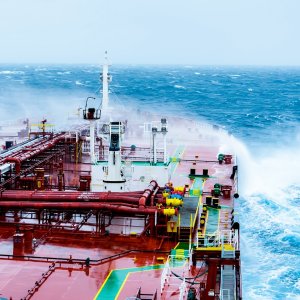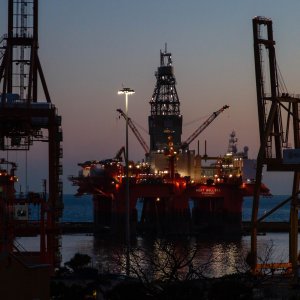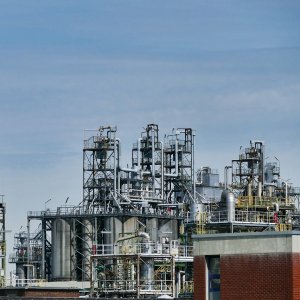Improved Capacity Lynchpin of Subsea Services Expansion

STORY INLINE POST
The 2011 acquisition of Rotech, a world leader in controlled flow excavation, was a milestone in Reef Subsea’s history. With the integration of Rotech and Scanmudring, Reef Subsea is now able to offer its clients in the oil and gas industry one of the largest portfolios of dredging and excavation services, vessels, and ROV services. Despite being a positive development, Edgar Álvarez, Country Manager of Reef Subsea, says the incorporation of Rotech saw difficulties during its initial stage. “When we introduced ourselves to our Mexican clients as Reef Subsea, they were hesitant as they had been used to working with Rotech in Mexico for almost eight years. The nationality change, as Rotech was a UK company and Reef Subsea is Norwegian, added to the confusion.” In addition, the Mexican subsidiary, known as Reef Subsea Servicios Submarinos, is supported by Reef Subsea Dredging and Excavation from the US, and gets technical assistance from the US and the UK. Reef Subsea has kept the Rotech name alive, providing services for Swiber, Technip and Permaducto under that brand. But Álvarez said that as clients have found out about the merger, they have affirmed that the quality of Reef Subsea’s work lived up to the Rotech name. Reef Subsea’s largest project in Mexico actually originated in Aberdeen, Scotland where it had been working with Subsea 7. The underwater engineering firm invited Reef Subsea to follow them to Mexico in 2012 to work on two of its projects, Line 60 and Line 67. These involved laying down 35km of pipeline in a delivery time of less than two months. Following on from this, Reef Subsea was contracted to work on Cal Dive’s Line 7, a 47km pipeline with a delivery time of three months. This was a boon for Reef Subsea who had not taken on any projects this large in Mexico for three years.
This increase in its client portfolio has driven Reef Subsea to pursue the acquisition of new equipment. “Our objective is to get as many projects as we can and use our distinctive tools to cover our clients’ demands,” states Álvarez. For its Mexican operations, Reef Subsea prefers to use T8000 equipment for pipeline trenching, which generates a large column of water travelling vertically down to the seabed at a velocity of up to ten meters per second. The effect of up to 8m3 of water per second hitting the seabed at this speed creates a powerful excavation force capable of breaking up stiff clays. These subsea trenching solutions are only expected to grow more popular as PEMEX focuses on deepwater and shallow water exploration and development projects in the Gulf of Mexico and the Bay of Campeche. Álvarez explains that this expansion marks a change of pace for the company. “Initially, Reef Subsea had only one piece of equipment in Mexico, thus limiting it to working on one project at the time. The firm now has several instruments in Mexico to expand its project portfolio.” Reef Subsea’s excavation services are delivering almost 1km per day with two crew changes, while Álvarez says competitors have equipment that performs a daily average of 500m. This additional capacity, coupled with the leasing costs of Reef Subsea’s equipment, provide a competitive edge. “Our costs are far from the largest expense in a project, considering clients have to pay for vessels, technicians, and cranes. Looking at the whole picture, clients can save additional money by reducing excavation times using Reef Subsea’s equipment.”
Álvarez links the company’s technological expansion to changes brought about by the current Mexican administration. He explains that Reef Subsea is a thirdlevel service provider, with PEMEX constituting the first level while the second is composed of suppliers that work directly with the national oil company. Reef Subsea collaborates with companies from the second level that provide services to PEMEX. Due to the federal administration change in 2012 and its aftermath, the company saw a delay in the execution of its projects until the first half of 2013. But after PEMEX underwent a series of modifications, the excavation firm was able to become active in developments with different clients. “I think the new administration brought about positive changes, such as pushing new projects in the country. Now we have more opportunities and, in consequence, we are looking to bring in more new pieces of equipment,” tells Álvarez.
Having established itself in Mexico in 2012, Reef Subsea plans on managing its entire business and operations from here. “Our Mexican subsidiary has larger revenues than its American counterpart. Dredging and excavation will be the firm’s focus in Mexico, increasing the budget for these areas by 25%. In addition, ROV and vessel capabilities are being used to expand the service portfolio. If everything goes according to plan, Reef Subsea will be able to provide a complete integrated service in no more than three years,” reveals Álvarez. Mexico is also of strategic importance, as the firm is looking at new opportunities in Ecuador, Colombia, Argentina, Venezuela, and Brazil. “We are trying to expand our business in Latin America. If we are able to start a project in any of our target countries, we will manage it from our Mexican headquarters.”





















